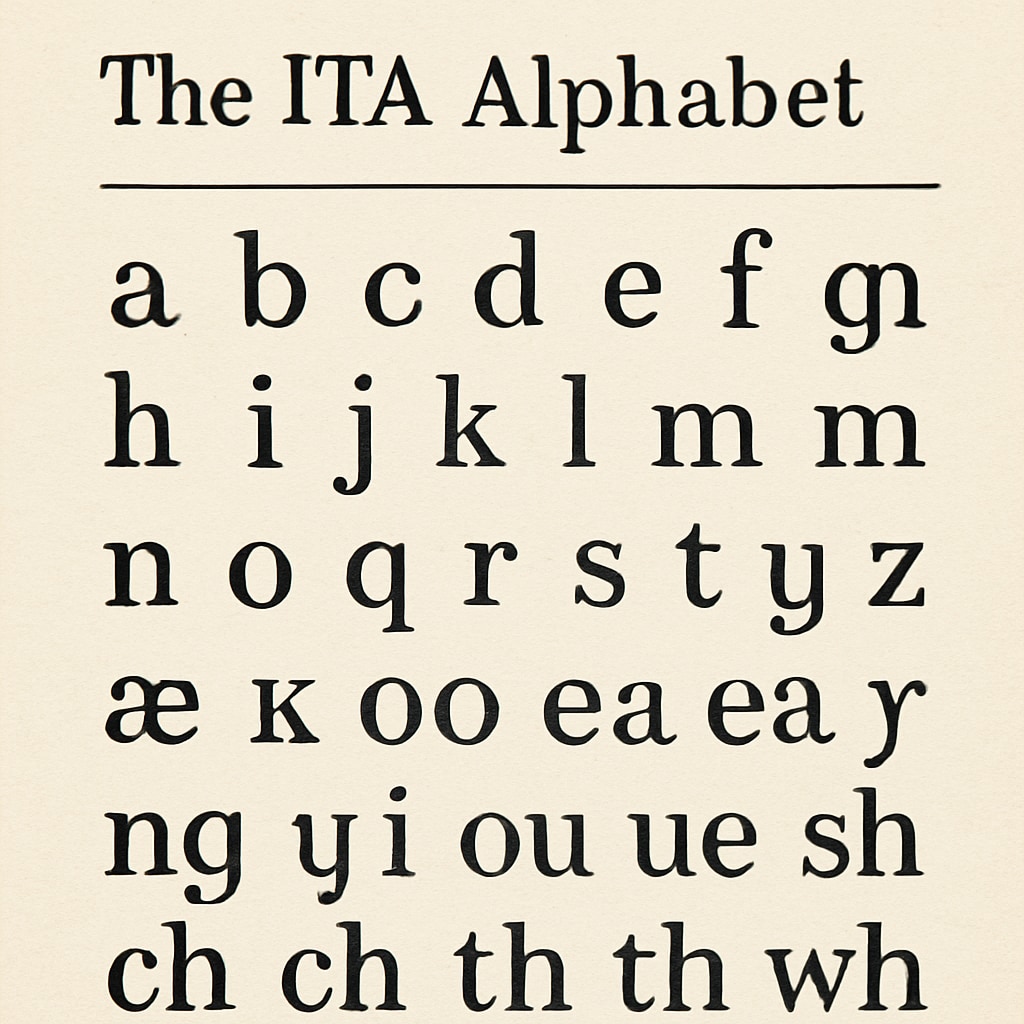The Initial Teaching Alphabet (ITA), introduced in the 70s as an educational innovation, aimed to simplify the process of learning to read and write in English. While it seemed promising at the time, its long-term impact on spelling abilities has been a subject of scrutiny. This article explores the history of the ITA teaching method, the controversies surrounding its implementation, and the lessons it offers for evaluating educational reforms.
The Origins of the ITA Teaching Method
The ITA was developed by James Pitman, a British educator, in the 1950s and gained traction in the 1960s and 70s. The method involved using a simplified 44-character alphabet designed to represent the phonetic sounds of English more accurately than the traditional alphabet. The goal was to make it easier for young learners to decode written words, bypassing the complexities of English orthography.
In theory, ITA was meant to serve as a transitional system. Children would first learn to read and write using the simplified alphabet before transitioning to standard English spelling. Advocates believed this approach would accelerate literacy. By the 1960s, schools in the UK, the US, and Australia began adopting ITA as part of experimental educational programs.

Unintended Consequences for Spelling Skills
While ITA seemed effective in the short term, it soon became apparent that it had unintended consequences for long-term spelling development. Many students who were taught using ITA struggled to adapt to standard English spelling later in their education. The simplified system, while easier to learn initially, created confusion as students transitioned from phonetic representations to traditional orthography.
For example, the ITA spelling of the word “friend” was “frend.” When these students encountered the correct spelling later, they often found it difficult to reconcile the two systems. This led to persistent spelling errors and, in some cases, reduced confidence in their language abilities. Research from the 1970s and 80s highlighted these issues, raising questions about the efficacy of ITA as a pedagogical tool.
Controversies and Criticism
The ITA method faced significant criticism from educators, linguists, and parents. One major concern was the lack of continuity between the ITA alphabet and standard English spelling. Critics argued that the approach prioritized short-term gains over long-term literacy development. Furthermore, transitioning back to the traditional alphabet often required additional instructional time, negating the method’s supposed efficiency.
Another point of contention was the emotional toll on students. Many felt frustrated and confused by the shift from ITA to standard English, which some educational psychologists believed could impact their self-esteem and motivation to learn. As a result of these concerns, the method’s popularity declined sharply by the late 1970s.

Lessons for Modern Educational Reforms
The rise and fall of the ITA teaching method serve as a cautionary tale for modern educators and policymakers. While innovation in education is essential, it is equally important to evaluate the long-term effects of new methods. The ITA experiment demonstrated that short-term success does not always translate to lasting benefits.
To avoid similar pitfalls, educational reforms should undergo rigorous testing across diverse contexts and extended timeframes. Policymakers must consider not only immediate outcomes but also the broader developmental trajectory of students. Additionally, involving teachers, parents, and researchers in the evaluation process can help identify potential issues before widespread implementation.
As education continues to evolve with the integration of technology and new teaching strategies, the lessons of ITA remain relevant. By learning from past mistakes, we can create systems that truly support students’ long-term success.
Conclusion: The ITA teaching method, though innovative for its time, reveals the complexities of educational reform. It underscores the importance of balancing short-term gains with long-term outcomes to ensure that students develop foundational skills that last a lifetime.
For additional information on the ITA method, its history, and its impact, you can explore resources like the Wikipedia page on ITA or Britannica’s overview of ITA.


